Mastering AWS CodeDeploy with Jenkins and Puppet
Some Reasons Why Deployment Pipelines are Hard:
-
Dynamic / Elastic cloud clusters
-
Multiple Dev & Staging Envs
-
Has to design for scale
-
Need to eliminate SPOF
-
Can’t allow any downtime
-
How to roll back?
How to Deploy Like a Pro:
-
Jenkins
-
AWS CodeDeploy
-
Puppet
Benefits:
-
Repeatable
-
Predictable
-
Works on Scale
-
No SPOF
-
No Downtime
How Do We Do It?
-
Our Software Engineer in the Automation and Development team help customers automate their processes in the cloud by developing a CI & CD solution for the AWS cloud, based on CodeDeploy, Jenkins and Puppet.
What is AWS CodeDeploy?
An AWS service that coordinates application deployments to fleets of instances.

Why AWS CodeDeploy?
-
Better alternative to MCollective when doing deployments in AWS
-
Solves all of MCollective’s pitfalls:
-
Predictability → part of the AWS infrastructure; machine discovery comes natural
-
Deployment tracking → live deployment status per machine & deployment phase
-
System downtime → deployment configurations focus on delivering rolling updates
-
Rollback → natural to simulate with CodeDeploy; just deploy some previous revision
-
Complex to use → AWS Management Console UI vs. “mco” CLI commands
-
Rolling Update Options
-
Health constraint = no. of hosts kept healthy during deployment
-
Built-in deployment configurations:
-
AllAtOnce — HOST_COUNT = 0
-
HalfAtATime — FLEET_PERCENT = 50%
-
OneAtATime — MOST_CONCURRENCY = 1
-
Custom deployment configurations (CLI or API only)
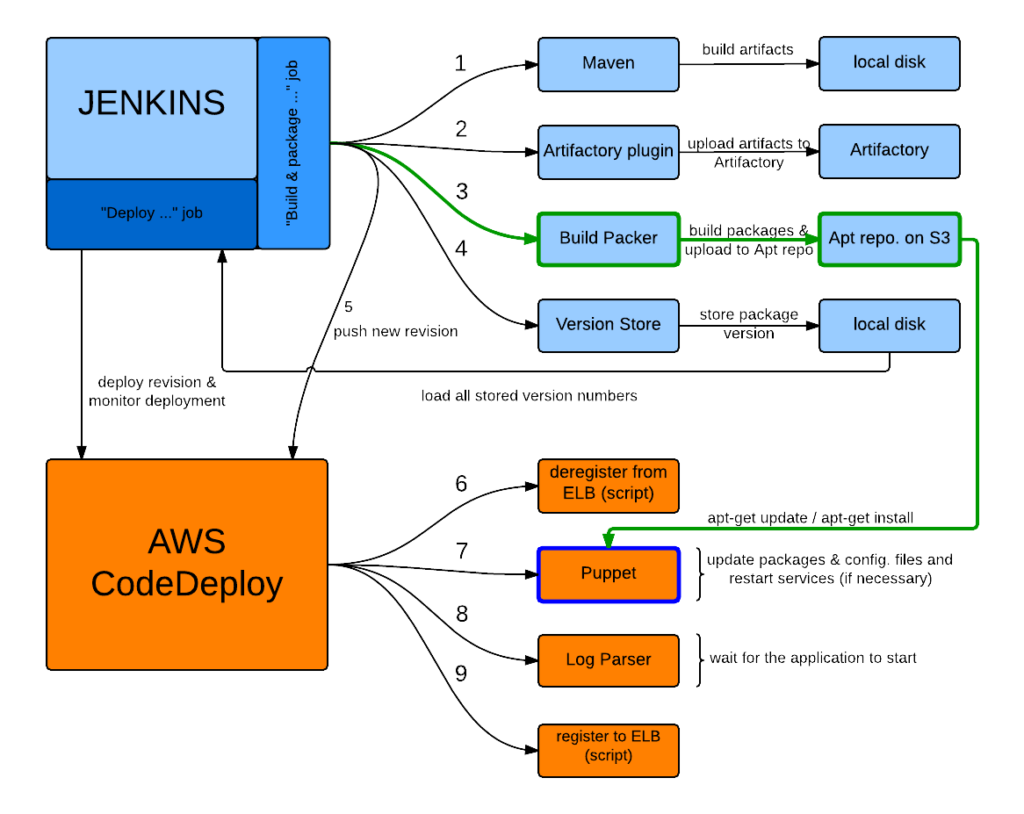
Why Masterless Puppet?
Pros
-
No single point of failure
-
Scalable solution (no DoS on master)
-
Simpler networking requirements
-
No need to configure certificates
Cons
-
No central dashboard → deployment status taken over by AWS CodeDeploy
Why Jenkins?
-
Very easy to get started with
Important, since we hand it over to our customers.
-
Open source, with tons of plugins and support
Relevant, considering the dynamics of the cloud computing field.
-
Supports more SCMs than any other CI solution
https://en.wikipedia.org/wiki/Comparison_of_continuous_integration_software#SCM_system_support

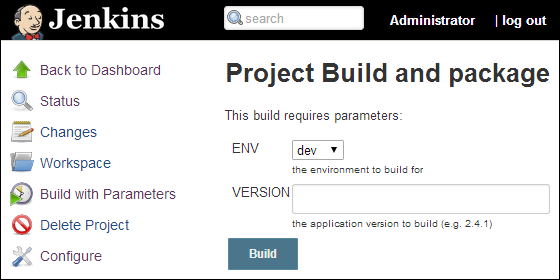
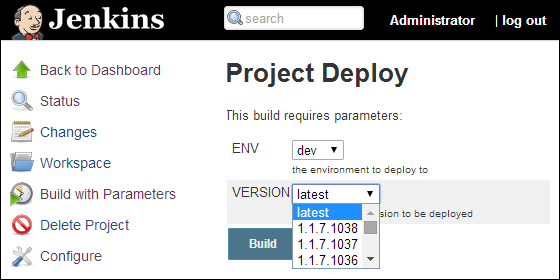
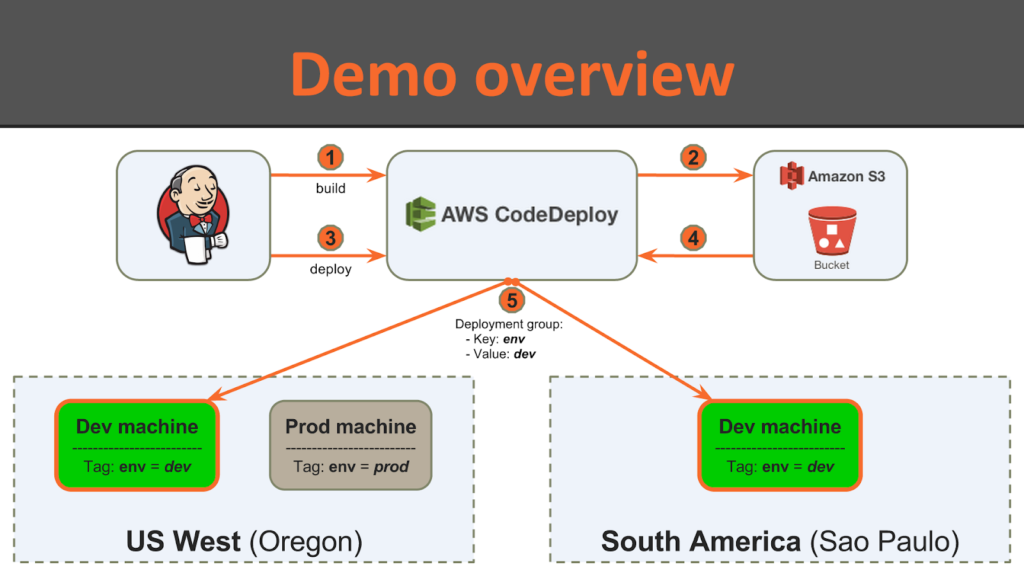
AWS CodeDeploy Pitfalls
-
Supported in only 4 regions (N. Virginia, Oregon, Ireland, Sydney)
-
Cannot delete old revisions from the AWS Management Console
-
No ELB rolling update scripts for Windows
-
Cannot pass arguments to lifecycle event scripts
Emind has found solutions for these pitfalls.
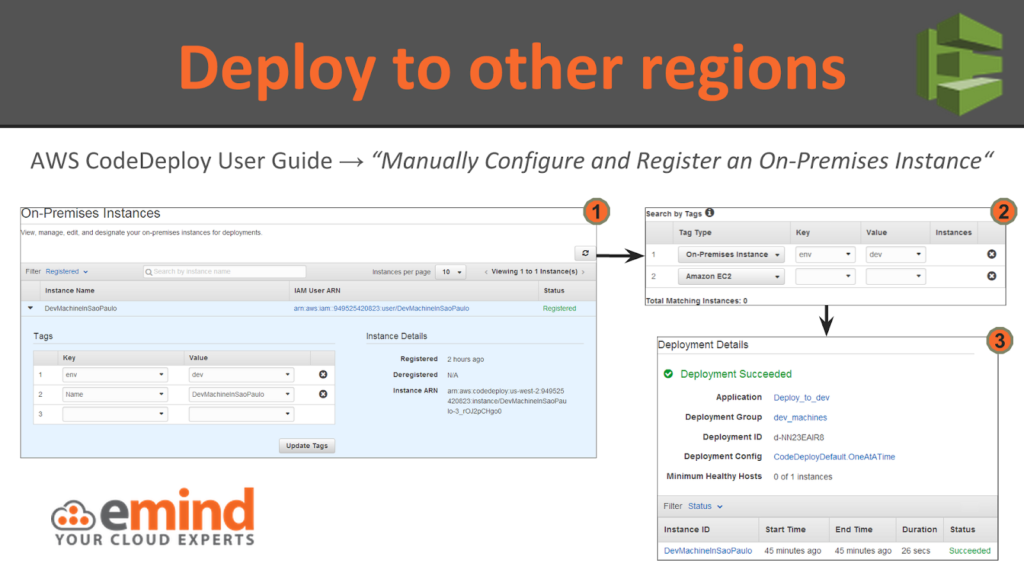
Jenkins Integration with AWS CodeDeploy
-
Jenkins plugin for AWS CodeDeploy (very basic):
-
Doesn’t allow separation of build phase from deploy phase
-
Can’t configure destination of deployed files
-
Can’t define hook scripts (e.g. run Puppet at deploy time)
-
Run AWS CLI commands from action scripts (full control)

Wrap-up
Deployments on AWS are only a few clicks away.
With what?
-
Puppet – manage configuration in a predictable way
-
AWS CodeDeploy – coordinate fine grained deployments
-
Jenkins – automate repeatable jobs; ease of use through GUI
How?
-
Configure machine roles from the AWS Management Console via tags
-
Build and deploy from Jenkins with only a few clicks & keystrokes
Watch the webinar now: Mastering CodeDeploy with Jenkins & Puppet
For more information on mastering CodeDeploy, watch the webinar or write us at info@emind.co